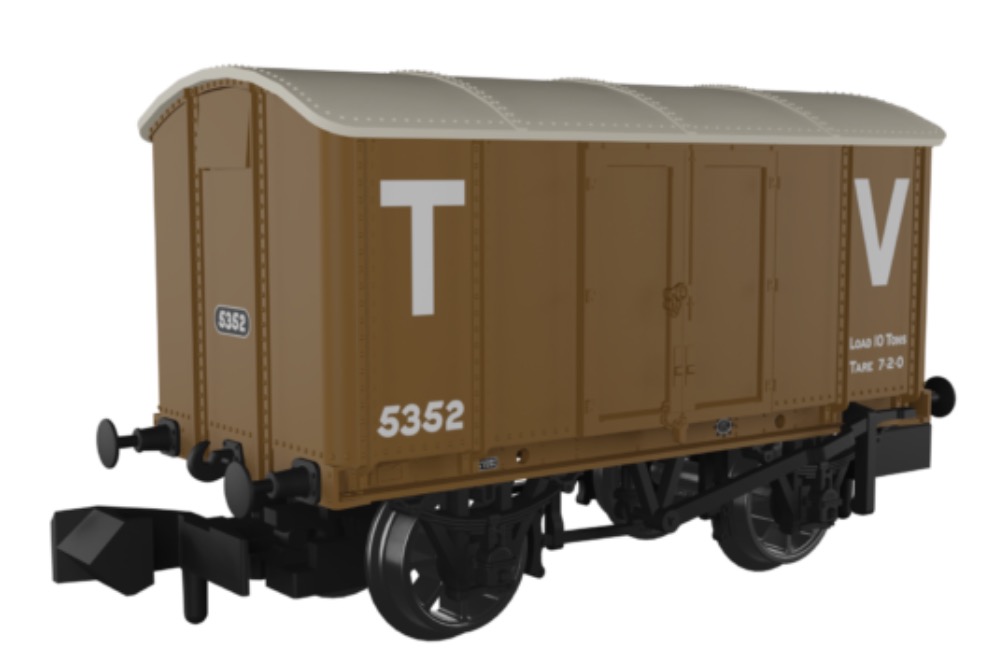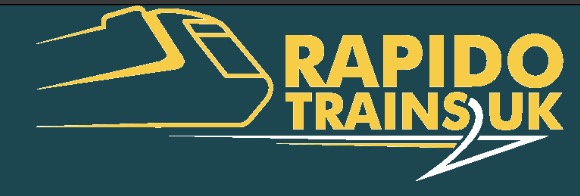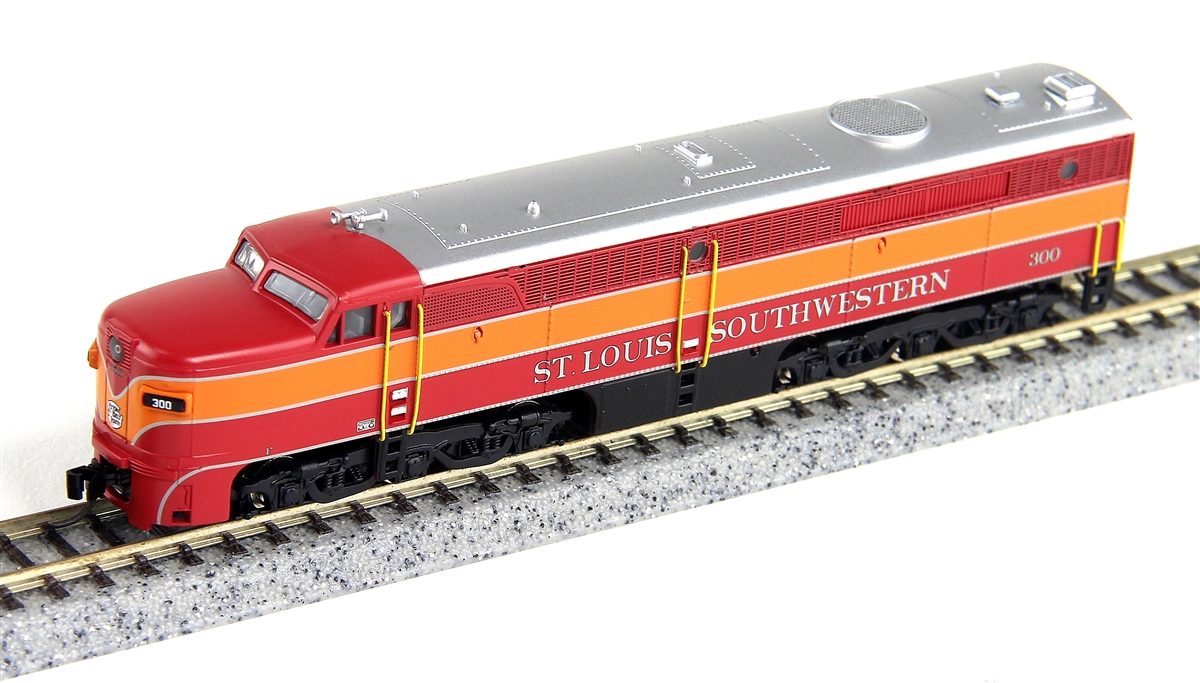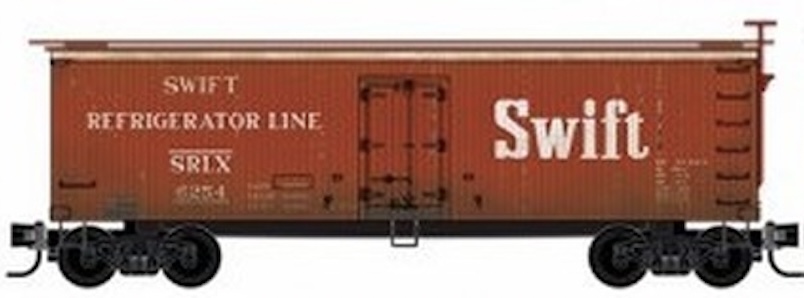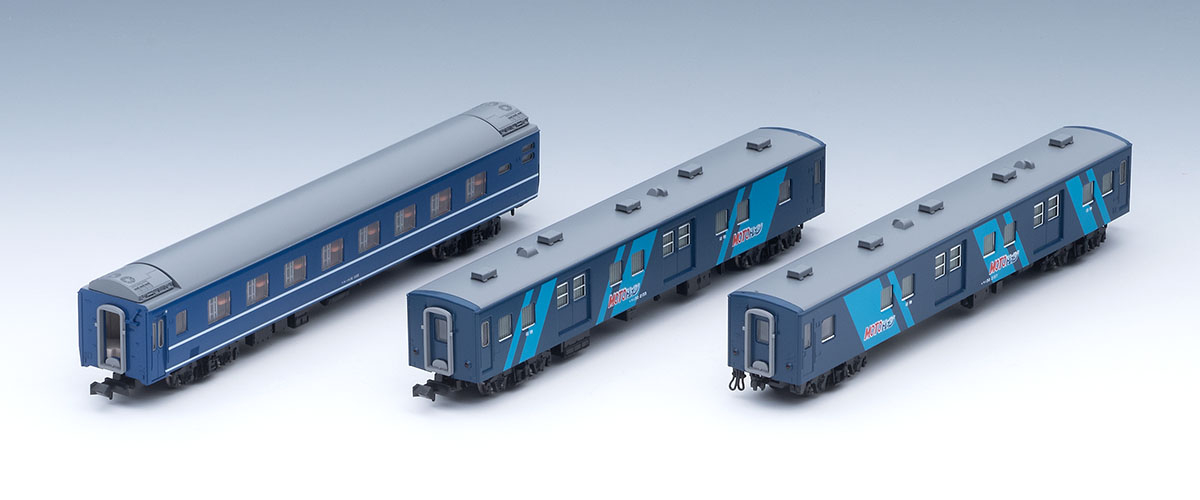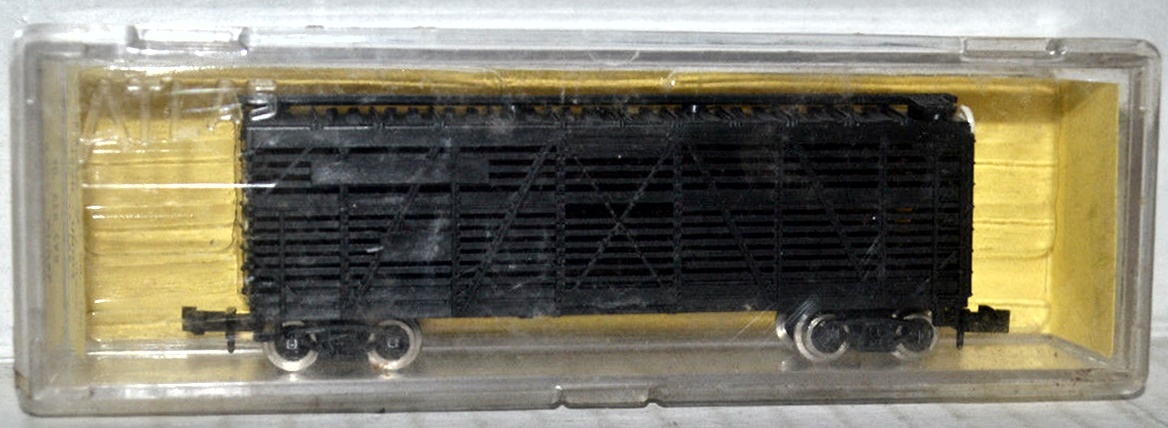Rapido Trains UK - 961009-A - Covered Wagon, Iron Mink, 10-Ton - Taff Vale Railway - 5352
| Production Type | Announced |
| Stock Number | 961009-A |
| Brand | Rapido Trains UK |
| Manufacturer | Rapido Trains UK |
| Body Style | Rapido Covered Wagon Iron Mink |
| Prototype | Covered Wagon, Iron Mink, 10-Ton |
| Road or Company Name | Taff Vale Railway (Details) |
| Reporting Marks | TV |
| Road or Reporting Number | 5352 |
| Paint Color(s) | Brown with Beige Roof |
| Print Color(s) | White & Black |
| Paint Scheme | Fantasy Scheme |
| Coupler Type | Rapido Hook NEM Standard Pocket |
| Coupler Mount | Body-Mount |
| Wheel Type | Nickel-Silver Plated Metal |
| Wheel Profile | Small Flange (Low Profile) |
| Multipack | Yes |
| Multipack Count | 3 |
| Multipack ID Number | 961009 |
| Multipack Element | 1 |
| Item Category | Rolling Stock (Freight) |
| Model Type | Covered Wagon |
| Model Subtype | 10-Ton |
| Model Variety | Metal, Iron Mink |
| Scale | 1/148 |
| Track Gauge | N standard |
Specific Item Information:
Road Numbers: Wagon 1 – Taff Vale No.5352 (end vents, double sided 4-shoe brakes and standard doors) Wagon 2 – Barry Railway No.1343 (end vents, double sided 4-shoe brakes and standard doors) Wagon 3 – Cambrian Railway No.139 (plated end vents, single sided 2-shoe brakes and GPV doors)
Road Name History:
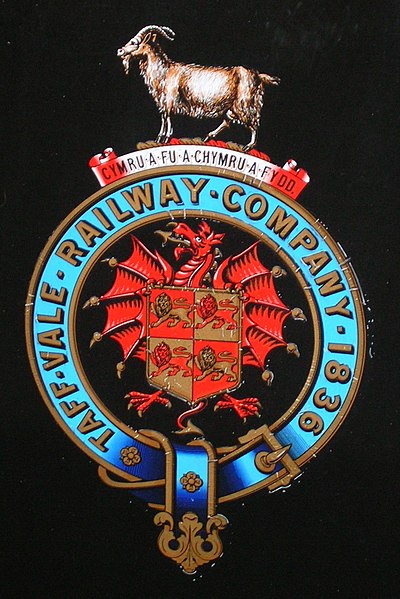 The Taff Vale Railway (TVR) was a standard gauge railway in South Wales, built by the Taff Vale Railway Company to serve the iron and coal industries around Merthyr Tydfil and to connect them with docks in Cardiff. It was opened in stages in 1840 and 1841.
The Taff Vale Railway (TVR) was a standard gauge railway in South Wales, built by the Taff Vale Railway Company to serve the iron and coal industries around Merthyr Tydfil and to connect them with docks in Cardiff. It was opened in stages in 1840 and 1841.
In the railway's first years, the coal mining industries expanded considerably and branches were soon opened in the Rhondda valleys and the Cynon Valley. The conveyance of coal for export and for transport away from South Wales began to dominate and the docks in Cardiff and the approach railway became extremely congested. Alternatives were sought and competing railway companies were encouraged to enter the trade.
In the following decades further branch lines were built and the TVR used "motor cars" (steam railway passenger coaches) from 1903 to encourage local passenger travel.
From 1922 the TVR was a constituent of the new Great Western Railway (GWR) at the grouping of the railways, imposing its own character on the larger organisation. The decline in the coal and iron industries took its toll on the mainstay of the network, but passenger trains still operate on most of the main line sections.From Wikipedia

In the railway's first years, the coal mining industries expanded considerably and branches were soon opened in the Rhondda valleys and the Cynon Valley. The conveyance of coal for export and for transport away from South Wales began to dominate and the docks in Cardiff and the approach railway became extremely congested. Alternatives were sought and competing railway companies were encouraged to enter the trade.
In the following decades further branch lines were built and the TVR used "motor cars" (steam railway passenger coaches) from 1903 to encourage local passenger travel.
From 1922 the TVR was a constituent of the new Great Western Railway (GWR) at the grouping of the railways, imposing its own character on the larger organisation. The decline in the coal and iron industries took its toll on the mainstay of the network, but passenger trains still operate on most of the main line sections.From Wikipedia
Item created by: CNW400
on 2024-01-11 15:48:45
Last edited by: CNW400 on 2024-01-11 15:50:35
If you see errors or missing data in this entry, please feel free to log in and edit it. Anyone with a Gmail account can log in instantly.
Last edited by: CNW400 on 2024-01-11 15:50:35
If you see errors or missing data in this entry, please feel free to log in and edit it. Anyone with a Gmail account can log in instantly.


